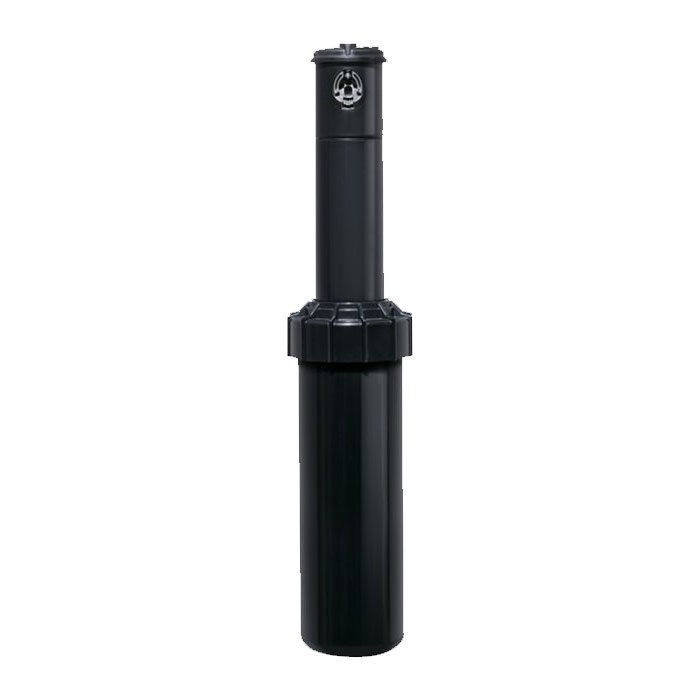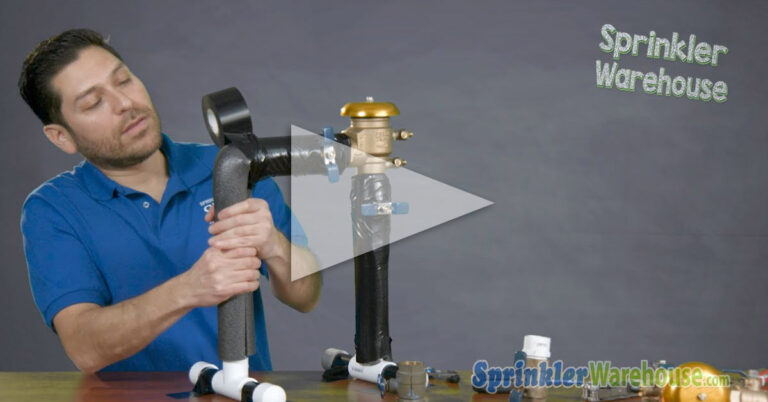Backflow preventers are essential components in irrigation and sprinkler systems, ensuring the safety and cleanliness of your water supply. If you’re new to using a backflow preventer or need a refresher on how to turn it on, this guide will walk you through the process.
But first, let’s take a look at what backflow preventers are, why they’re crucial for your sprinkler system, and then provide a detailed step-by-step guide on how to turn them on properly.
Understanding Backflow Preventers
To get a better picture of how to properly operate a backflow preventer, it’s essential to first understand the concept of backflow itself.
What is Backflow?
Backflow is the undesirable reversal of water flow from its intended direction, which can lead to contamination of potable (drinkable) water with pollutants, chemicals, or other hazardous substances.
Backflow can occur in two primary ways:
- Backpressure: Backpressure refers to when the pressure in the system downstream of the supply point exceeds the pressure in the supply pipeline. This can happen for various reasons such as pump malfunctions or thermal expansion in boilers.
- Backsiphonage: Backsiphonage refers to when there is a drop in the supply pressure causing the upstream pressure to be lower than the downstream pressure. Common causes include a break in the main water line or high water withdrawal in the system.
The Role of a Backflow Preventer
A backflow preventer is a device installed in your sprinkler system to prevent contaminated water from flowing back into the clean water supply. It acts as a one-way gate, allowing water to flow into your sprinkler system while blocking any backward flow.
These devices are crucial in maintaining the integrity of drinking water supplies, especially in areas where the sprinkler system might be exposed to fertilizers, pesticides, and other chemicals.
Types of Backflow Preventers
There are several types of backflow preventers, including:
- Pressure Vacuum Breaker (PVB): This device prevents backflow by sealing off the water supply when the pressure drops.
- Double Check Assembly (DCA): Consists of two check valves in series, providing redundancy and increased safety.
- Reduced Pressure Zone (RPZ) Valve: Offers the highest level of protection, featuring two check valves and a pressure relief valve.
How to Turn on a Backflow Preventer: Step-by-Step Guide
In this section, we’ll cover everything you need to know about turning on a backflow preventer, including the necessary tools and materials, a detailed installation guide, and essential maintenance tips to keep your system running smoothly.
Tools and Materials Needed
In order to correctly turn on your new backflow preventer, you will need the following items:
- Adjustable wrench
- Screwdriver
- Bucket or towel (to catch any water spills)
- Backflow preventer key (if applicable)
Preliminary Checks
Before turning on your backflow preventer, it’s essential to conduct a few preliminary checks:
- Inspection: Ensure the backflow preventer and surrounding pipes are free from visible damage or leaks. Check for any debris or corrosion.
- Isolation Valves: Make sure all isolation valves (both upstream and downstream) are closed. This will prevent water from rushing through the system uncontrolled.
Step-by-Step Activation
1. Locate the Shutoff Valves
Identify the main shutoff valve for the irrigation system. This is usually found near the water meter or at the point where the irrigation system connects to the main water supply.
2. Close the Test Cocks
Most backflow preventers have test cocks (small valves used for testing the device). Ensure these are closed before proceeding. Typically, there are two or four test cocks depending on the type of backflow preventer.
3. Open the Isolation Valves
Slowly open the upstream isolation valve (the one closest to the water supply). This allows water to enter the backflow preventer. Open the valve slowly to avoid a sudden surge of water pressure, which can damage the system or cause water hammer.
4. Bleed (Release) the Air
Once the upstream valve is open, use a screwdriver to slightly open the test cocks one at a time. This will help release any trapped air out of the system. Start from the test cock nearest the supply side and work your way to the furthest.
5. Open the Downstream Valve
After bleeding the air, slowly open the downstream isolation valve (the one closest to your sprinkler system). This will allow water to flow through the backflow preventer into the system. Again, open the valve slowly to prevent water hammering and to ensure a smooth flow of water.
6. Check for Leaks
Inspect the backflow preventer and surrounding connections for any leaks. If you notice any water dripping or spraying, tighten the connections as needed using an adjustable wrench.
7. Test the System
With the backflow preventer now active, turn on your irrigation system to ensure everything is functioning correctly. Check all sprinkler heads and drip lines for proper operation.
8. Final Inspection
Perform a final inspection of the backflow preventer and the irrigation system to ensure there are no leaks and everything is operating smoothly. Ensure that the test cocks are fully closed after bleeding the air.
Backflow Device Maintenance Tips
To ensure your backflow preventer remains in good working condition, regular maintenance is crucial. Here are some tips:
- Annual Inspection: Have a certified professional inspect your backflow preventer annually to ensure that it’s functioning correctly and complies with local regulations.
- Winterization: In colder climates, make sure to properly winterize your backflow preventer to prevent freezing and damage. This typically involves draining the device and blowing out the irrigation lines.
- Clean Regularly: Periodically clean the backflow preventer and surrounding area to prevent debris buildup which can impede its function.
Wrapping Up: Ensuring Safe and Efficient Irrigation
Turning on a backflow preventer is a straightforward process, but it requires careful attention to detail to ensure the safety and efficiency of your irrigation system.
Whether you’re a seasoned gardener or a newbie to sprinkler systems, understanding and properly managing your backflow preventer is an essential part of maintaining a healthy and efficient sprinkler system.
By following the steps outlined in this guide, you can confidently activate your backflow preventer, keep your potable water supply protected from contamination, and enhance the performance of your irrigation system.
For the ultimate protection, check out our backflow preventers.
And if you want to stay up-to-date on the latest Sprinkler Warehouse news and make the most out of all our one-of-a-kind promotions, join the IrriGators community today. Happy watering, IrriGators!




























